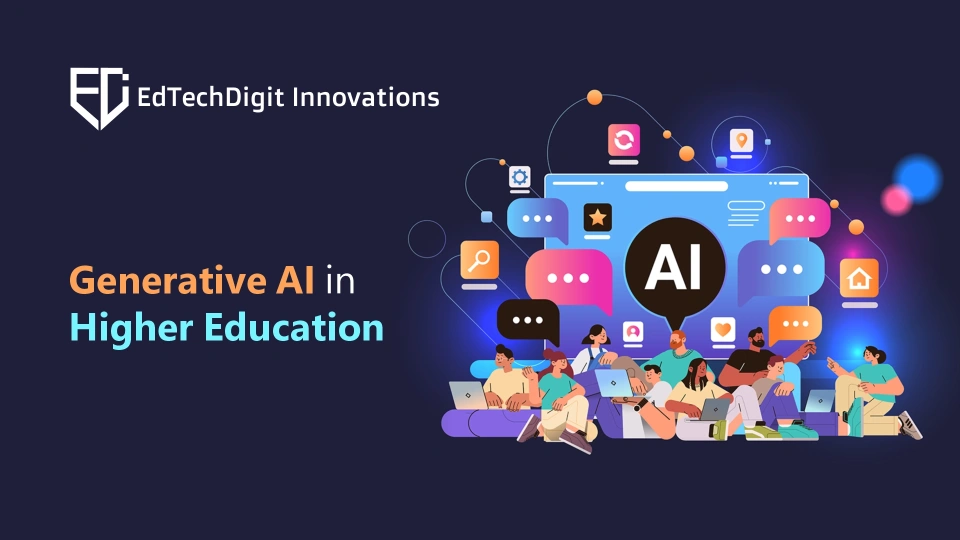As generative AI tools continue to change the face of teaching and learning, universities worldwide are under pressure to respond with clarity and prudence. Research in early 2025 by the Higher Educational Policy Institute (HEPI) provided insight into the unprecedented level of student use of AI, reporting that over 90% of students were utilising AI in their academic work.
Educational institutions across the globe have therefore been challenged to not only revise their policies but also develop a deeper understanding of the ethical implications of generative AI and harness the power of AI while maintaining academic integrity. This blog will consider how institutions are considering their responses to changing generative AI education discourse in light of both international trends and local factors.
Institutional Urgency and Diversity in Response
Most higher education institutions (HEIs) recognize the potential of generative AI to change the way teaching, learning, and research function. The pace and style of institutional actions, however, are considerably varied. Some universities have implemented rich policies, while others are still watching and prototyping.
Many institutions have taken a more proactive approach to address the student misuse and academic dishonesty issue. Now, more universities are becoming proactive in their approach, establishing task forces, consultation groups, and forums to discuss the role of AI in teaching, learning, and research.
In the project entitled "Generative AI in Higher Education: A Global Spotlight of Institutional Adoption Policies and Guidelines", the research team analyzed 47 institutions from 26 countries. It grouped them into three categories: those with formal policies, those offering preliminary guidelines, and those still developing a policy. This classification highlights variations in technological readiness, institutional intent, pedagogical culture, and national digital ecosystems.
Policy Themes Emerging Worldwide
Several recurring themes have surfaced in the institutional discourse on GAI, despite regional variations.
- Academic Integrity:
The most pressing concern across institutions for the purpose of consistent credibility is the fear that GAI will be misused to facilitate plagiarism and unauthorized assistance. Many universities are reconsidering what constitutes "original work" and are updating their honor codes accordingly.
Most policies do not prohibit the use of the tools, but many focus on transparency. Institutions that allow GAI use are now requiring students to disclose if GAI tools were used and, if so, how.
- Pedagogical Use and Innovation:
Institutions increasingly view generative AI as a support tool for teaching, useful for tasks like lesson planning or simplifying complex topics. However, policies emphasize that AI should complement, not replace, human instruction. Educators are encouraged to design assignments that foster critical thinking and personalization, areas where AI still falls short.
- Equity and Access:
The global digital divide remains a significant issue. Some students in low-resource contexts do not have access to powerful AI tools, let alone the internet bandwidth to run them. Institutions are being called upon to examine the equity implications of using GAI.
Some policies in countries like South Africa and India even contain provisions for how great care must be taken in the use of AI to ensure that it does not exacerbate existing gaps in opportunity and learning outcomes.
- Ethics and Data Privacy
Generative AI raises ethical concerns around consent, data ownership, and algorithmic bias. Institutions, especially in regions like the EU with strict privacy laws, are cautious. Some ban using student data on external AI platforms due to GDPR risks, while others develop in-house tools with clear data policies.
- Faculty Autonomy
Another key theme is respect for faculty autonomy. Many universities do not require a single position on GAI. In place of a specific policy, departments and faculty members will determine how to approach AI in their courses as long as it follows the university's overarching principles.
Regional Highlights: A Comparative Look
The research highlights the regional differences in the adoption of educational institutions worldwide.
- United States and Japan:
Institutions in the areas are framing GAI around personalization and improving student experience. Pilot programs investigating using AI tutors and adaptive assessments have also been conducted. Concerns relating to bias, misinformation, and over-reliance still seem to dominate.
- China and Mongolia:
The discussion is situated around national agendas, especially around the areas of social responsibility and data security. GAI tools coming out of these countries often reflect government intervention, with universities embedding social values and censorship guidelines in their AI ethics policy.
- Australia:
Regulatory agencies have taken a proactive approach by providing accountability recommendations across the sector. In terms of AI-generated work, in response to ensuring learning is occurring, several universities are reintroducing oral examinations and in-person assessments.
- United Kingdom:
Many UK institutions are pursuing this idea of arrival and positioning for considering the things, advocating for experimentation with GAI, but promoting clear ethical and academic boundaries. Universities are engaging with sector agencies to develop best-practice frameworks to ensure innovation occurs while maintaining educational integrity.
Looking Ahead—Recommendations and Challenges
The future of Generative AI in higher education relies on responsible co-evolution. As AI tools improve, institutions must develop systems that co-evolve with new technology. The study provides some recommendations:
- Foster cross-institutional collaboration for sharing guidelines and practices.
- Invest in AI literacy learning for students and faculty.
- Design context-specific policies that reflect the realities of local culture, legal context, and infrastructure.
- Involve students in the policy process, ensuring guidelines will stem from real experiences in the classroom.
One thing is clear: outright bans on generative AI are no longer effective. Instead, thoughtful integration backed by transparent, inclusive policies will shape its role in education.
GAI is a promising as well as a risky product; however, how it impacts higher education will likely be determined more by how we collectively respond to it than by the technology itself. Those institutions that approach GAI with a sense of innovation while still upholding their integrity will have the most potential to help lead the future of learning.

